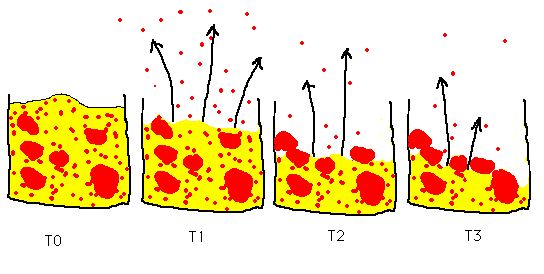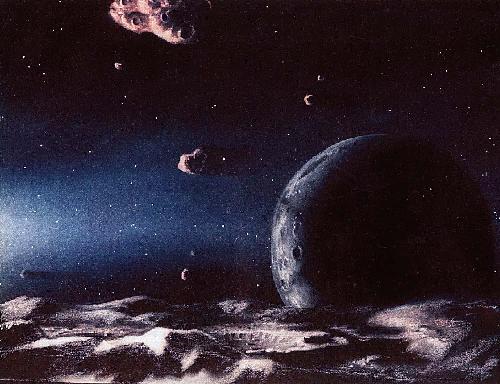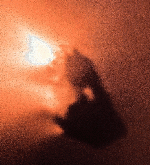
The formation of a rubble mantle
The cartoon above depicts a cross-section through a piece of a
cometary nucleus and shows the formation of a rubble mantle.
At initial time T0, the comet nucleus consists of a mixture of
ices (yellow) and rocks (red). At later time T1, sunlight from above
heats the nucleus surface and sublimates the ice. Dust particles and
the smaller rocks are entrained in the gas flow (arrows) and are
ejected from the nucleus. Large rocks are too heavy to be lifted.
By time T3, about half the surface is covered by large rocks left
behind as a lag deposit. In the final time step T4, the surface is
almost completely sealed by the rubble mantle. The time difference
T4 - T0 is uncertain but probably very short. Rubble mantles could
form within a single orbit.
The black, inactive part of the nucleus of comet Halley is probably
a rubble mantle.
The rubble mantle shown here is distinct from the
irradiation mantle caused by cosmic ray bombardment.

